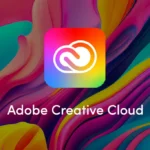In the rapidly evolving landscape of artificial intelligence (AI) and machine learning (ML), data annotation technology plays a pivotal role in shaping the future of these technologies. Data annotation involves the process of labeling and tagging data to train machine learning models making them more accurate reliable and efficient. This article delves into the significance of data annotation technology its applications across various industries and the advancements that have propelled this field forward.

The Basics of Data Annotation:
Data annotation is the cornerstone of machine learning providing the labeled datasets necessary for training models. Annotations involve adding metadata, such as labels, tags, or bounding boxes, to raw data enabling algorithms to understand and interpret information accurately. This process is crucial for supervised learning where models learn from labeled examples to make predictions on new unseen data.
Applications across Industries:
- Autonomous Vehicles: Data annotation is instrumental in the development of autonomous vehicles. Labeled datasets help train algorithms to recognize and respond to various objects and scenarios on the road enhancing the safety and reliability of self-driving cars.
- Healthcare: In healthcare, data annotation is used to label medical images assisting in the diagnosis of diseases and conditions. This technology aids in training image recognition models for tasks such as detecting tumors, anomalies, and other medical conditions.
- E-commerce: For e-commerce platforms, data annotation is employed to enhance product recommendation systems. Labeled data on user preferences and behaviors enable algorithms to provide personalized recommendations improving user experience and increasing sales.
- Natural Language Processing (NLP): Data annotation is crucial for NLP applications including sentiment analysis, chatbots, and language translation. Labeled text data helps train models to understand and generate human-like responses making these technologies more effective in real-world applications.
Advancements in Data Annotation Technology:
- Semi-Supervised and Self-Supervised Learning: Recent advancements in data annotation technology include techniques that reduce the reliance on fully labeled datasets. Semi-supervised and self-supervised learning approaches leverage labeled and unlabeled data allowing models to learn more efficiently from limited labeled examples.
- Active Learning: Active learning algorithms identify the most informative data points for annotation reducing the overall labeling workload. By selecting data points that maximize model improvement active learning accelerates the training process and minimizes the need for extensive manual annotation.
- Multi-Modal Annotation: As AI systems become more sophisticated the demand for multi-modal annotation has risen. This involves annotating data from various sources such as images, text, and audio to train models that can process and understand information from multiple modalities.
Common Annotation Techniques in Detail:
- Image Annotation Methods:
- Bounding Boxes: Bounding boxes involve drawing rectangular frames around objects or regions of interest within an image. This method is widely used for object detection tasks where the goal is to locate and classify specific objects within the image.
- Polygons: Polygons are used to outline irregularly shaped objects within an image. This technique is advantageous when simple geometric shapes cannot accurately represent objects providing more precise annotations for complex structures.
- Keypoints: Keypoints involve marking specific points of interest on an image often corresponding to key features or landmarks. This method is common in tasks like human pose estimation facial recognition and object tracking where the focus is on capturing detailed spatial relationships.
- Semantic Segmentation: Semantic segmentation divides an image into segments or pixels assigning each segment a specific label based on its content. This technique is valuable for understanding the detailed semantics of an image, as it provides a pixel-level classification of objects and their boundaries.
- Text Annotation Techniques:
- Named Entity Recognition (NER): NER involves identifying and classifying named entities, such as names of people, organizations, locations, dates and more within a text. This is essential for applications like information extraction document categorization and question-answering systems.
- Sentiment Analysis: This technique is widely used in customer feedback analysis social media monitoring and product reviews to understand public opinion.
- Part-of-Speech Tagging: Part-of-speech tagging assigns grammatical categories (such as nouns, verbs, adjectives, etc.) to each word in a sentence. This helps in understanding the syntactic structure of a text aiding tasks like machine translation, text summarization, and information retrieval.
Open-Source Data Annotation Tools:
- LabelImg:
- Overview: LabelImg is an open-source graphical image annotation tool that allows users to draw bounding boxes around objects in images. It supports common annotation formats like PascalVOC and YOLO, making it compatible with various machine-learning frameworks.
- Features: User-friendly interface support for multiple annotation formats and cross-platform compatibility (Windows, Linux, Mac).
- RectLabel:
- Overview: RectLabel is a macOS application designed for annotating images and videos. It offers a range of annotation tools, including bounding boxes, polygons and smart labeling making it suitable for diverse annotation tasks.
- Features: Rich annotation capabilities, support for video annotation and integration with machine learning frameworks.
- VGG Image Annotator (VIA):
- Overview: VIA is a web-based open-source tool developed by the Visual Geometry Group at the University of Oxford. It enables users to annotate images with bounding boxes, polygons, points, lines and regions offering versatility in annotation tasks.
- Features: Web-based interface support for multiple annotation types and team collaboration features.
- Doccano:
- Overview: Doccano is an open-source text annotation tool that supports tasks like named entity recognition (NER), sentiment analysis and text classification. It is designed for both single-user and collaborative annotation projects.
- Features: Text annotation capabilities collaboration support and customizable annotation workflows.
Advantages of Open-Source Data Annotation Tools:
- Cost-Effectiveness:
- Open-source tools eliminate the need for expensive commercial annotation solutions providing a cost-effective alternative for smaller projects or individual researchers.
- Flexibility and Customization:
- Users can modify and extend the functionality of open-source tools based on their specific requirements allowing for flexibility and customization.
- Community Support:
- Open-source projects often have active communities that contribute to ongoing development provide support and share best practices. This ensures that users have access to a wealth of knowledge and resources.
- Compatibility:
- Many open-source tools support common annotation formats ensuring compatibility with various machine-learning frameworks and facilitating seamless integration into the model training pipeline.
- Cross-Platform Compatibility:
- Several open-source annotation tools are designed to work on multiple operating systems enhancing accessibility for users across different platforms.
Considerations when Using Open-Source Annotation Tools:
- While open-source tools offer numerous benefits users should carefully assess their specific annotation requirements and the features provided by each tool. Factors such as annotation type ease of use and integration capabilities with existing workflows should be considered when selecting a tool for a particular project. Additionally staying updated with the community and any tool-specific documentation is crucial for effective utilization.
Conclusion:
Data annotation technology is at the forefront of AI and ML advancements shaping the capabilities of these technologies across diverse industries. As the demand for more accurate and efficient machine learning models continues to grow innovations in data annotation technology will play a pivotal role in meeting these challenges. The ongoing evolution of annotation techniques, such as semi-supervised learning and active learning demonstrates the commitment to making AI more accessible robust and capable of addressing real-world problems.







